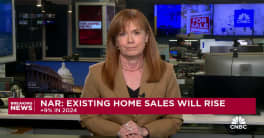The Federal Reserve's Senior Loan Officer Opinion Survey on Bank Lending Practices asked lending officers from 64 institutions for information on changes in lending standards and demands for loans over the previous three months. Officers were asked about changes in their commercial and industrial lending, commercial real estate lending, and lending to households including residential mortgages, home equity lines of credit (HELOCs) and consumer loans. In addition to the standard questions asked in every survey, there are always a set of special questions which this month included questions about the banks' participation in the revised Home Affordable Refinance Program (HARP 2.0) and about changes in their standards for approving applications for mortgages insured by the Federal Housing Administration (FHA).
Lenders were asked whether lending standards had changed for prime residential loans, non-traditional loans, or subprime loans. Of 64 banks that responded they wrote subprime loans 92.2 percent said their standards had remained basically unchanged with two banks saying standards had tightened somewhat and three responding they had eased somewhat. Twenty-three banks wrote nontraditional mortgages and 91.3 percent reported their standards were unchanged. The remaining two banks split between somewhat tightened and somewhat eased standards. Only four banks reported writing subprime mortgages and all said that its standards were unchanged.
Fifty-five percent of banks reported little change in demand for prime mortgages while 33 percent said demand was moderately stronger and 6.3 percent reported substantially stronger demand and the same number said demand was moderately weaker. Of the banks writing nontraditional mortgages 71 percent reported unchanged demand and 21 percent moderately strong demand. The remaining 8 percent said demand was moderately weaker. All four banks doing subprime lending reported no change in demand.
Of the 65 banks writing HELOCs, 57 or 87.7 percent said their lending standards were essentially unchanged with six banks reporting somewhat tighter standards and two somewhat eased standards. Demand for HELOCs was about the same at 45 banks (70 percent), moderately weaker at 8 and moderately stronger at 12.
Officers were asked to compare their bank's current policies in approving applications for FHA mortgage loans to those that prevailed in 2006 and a second special question asked about factors that may be affecting the bank's willingness to approve such loans. Five banks or 10 percent said their bank was much less likely than in 2006 to approve an application for a 30-year fixed rate FHA purchase mortgage to a borrower with a FICO score of 660, all other factors being equal. Six lenders or 12 percent said they would be somewhat less likely, 67 percent said about the same, 8 percent said somewhat more likely and 4 percent much more likely. At a FICO score of 620 only 33 percent would be as likely to write the loan as under the old rules and 27.5 percent would be much less likely and at a score of 580 73 percent would be somewhat or much less likely to approve the loan. . Fifty-one lenders responded to this set of questions.
Officers were scattered in their responses about factors impacting a bank's decision to write or not write an FHA loan. The chance of an FHA put back of a delinquent loan was the most important consideration for 23.7 percent and 37 percent considered it very important. High servicing costs for delinquent loans was a very important consideration for 22 percent but none called it the top factor. Heightened concerns about the bank's compare ratio hindering its lending capability was most important to 23.7 percent and very important to 12 percent. Concerns about the solvency of the FHA insurance fund was unimportant or only somewhat important to 92 percent and concern about the bank's exposure to residential real estate loans was an important concern to 18 percent and the top worry for 10 percent. An unfavorable outlook for house prices was unimportant or of minimal important to 90 percent and concern about the capacity of the bank to process high loan volumes was important or most important to only 11 percent.
Another of the special questions concerned the HARP 2.0 program. Lenders were asked what proportion of refinance applications over the previous three months could be attributed to the program. More than a third of respondents said less than 10 percent while 42 percent said between 10 and 30 percent. Sixteen percent said 30 to 50 percent of their refinancing was through HARP. None credited the program with more than 50 to 70 percent of that lending.
Finally, lenders were asked, based on their experience to date with HARP 2.0, about what share of applications under HARP 2.0 they anticipate will be approved and successfully completed. Twenty percent said more than 80 percent, 47 percent responded 60 to 80 percent and 20 percent said 40 to 60 percent. Only 30 banks reported that they did HARP 2.0 loans.








